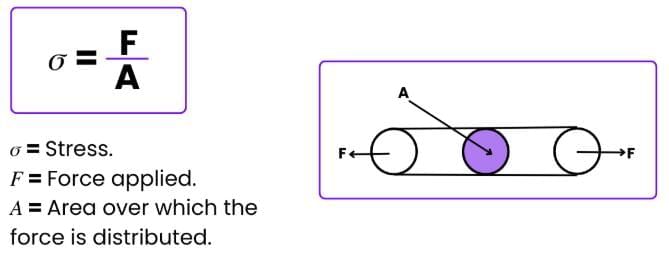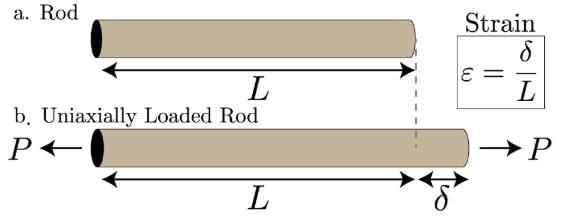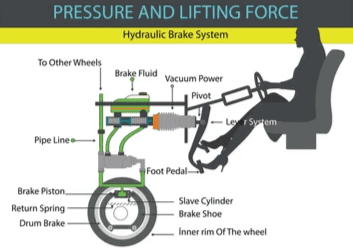Mnemonic: Properties of Bulk Matter | Physics Class 11 - NEET PDF Download
Understanding physics becomes easier with the right tools! This document uses creative mnemonics to simplify complex concepts like stress, strain, Pascal's Law, and Bernoulli's Principle, helping you learn and apply these ideas effortlessly. Let's get started!
1. Stress and Strain
Mnemonic: "Stress is Force, Strain is Change."
Mnemonic Explanation:
a) Stress → Force
- Stress is the internal resistance offered by a material per unit area when subjected to an external force.
- It represents how much force is acting on a specific area of the material.

b) Strain → Change
- Strain is the relative change in the material’s shape or size due to applied stress.
- Formula:


- It represents how much the material deforms (changes) compared to its original state.

2. Pascal’s Law
Pascal's Law states that in a confined fluid at rest, any change in pressure applied at one point is transmitted undiminished throughout the fluid. This principle is the basis for hydraulic systems.
Mathematically:
Where:
P: Pressure
F: Force
A: Area

Mnemonic for Pascal's Law: "Pascal's Pressure Spreads Uniformly"
Explanation of the Mnemonic:
- Pascal's: Refers to Pascal's Law, the principle governing pressure in fluids.
- Pressure: Indicates the external force applied to the fluid, creating pressure.
- Spreads Uniformly: Highlights the key idea that the pressure change is distributed equally throughout the fluid.
Application:
- Hydraulic systems: Pascal's Law is the basis for devices like hydraulic lifts and brakes, where pressure applied at one point is transmitted evenly to perform work at another point.

3. Bernoulli's Principle:
Bernoulli's Principle states that for an incompressible, non-viscous fluid in steady flow, the sum of the pressure energy, kinetic energy per unit volume, and potential energy per unit volume remains constant along a streamline.
Mathematically:
Where:
- P: Pressure energy
- : Kinetic energy per unit volume
- ρgh: Potential energy per unit volume
Mnemonic : Pressure Kicks Potential Constantly."
Explanation:
- Pressure: Refers to the Pressure in Bernoulli's equation (P).
- Kicks: Represents the addition of Kinetic Energy ().
- Potential: Highlights the contribution of Potential Energy (
- Constantly: Sum is Constant.
Application
:
- Airplane Wings (Lift Force):
The curved upper surface of airplane wings creates faster airflow, reducing pressure above the wing compared to the bottom. This pressure difference generates lift.
|
96 videos|367 docs|98 tests
|
FAQs on Mnemonic: Properties of Bulk Matter - Physics Class 11 - NEET
| 1. What is Pascal's Law and how does it apply in hydraulics? |  |
| 2. Can you explain Bernoulli's Principle and its significance in fluid dynamics? |  |
| 3. How do Pascal's Law and Bernoulli's Principle differ in their applications? |  |
| 4. What are some real-world applications of Pascal's Law? |  |
| 5. How does Bernoulli's Principle explain the flight of an airplane? |  |






















